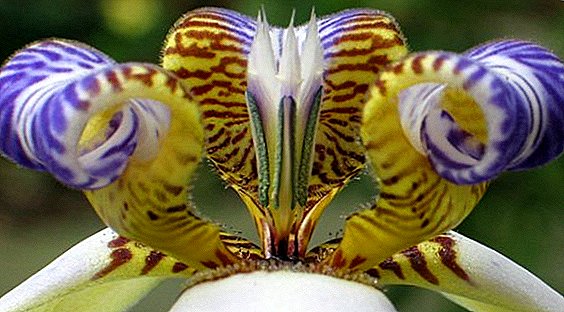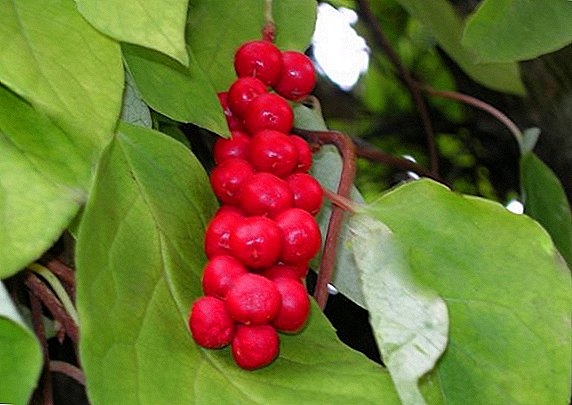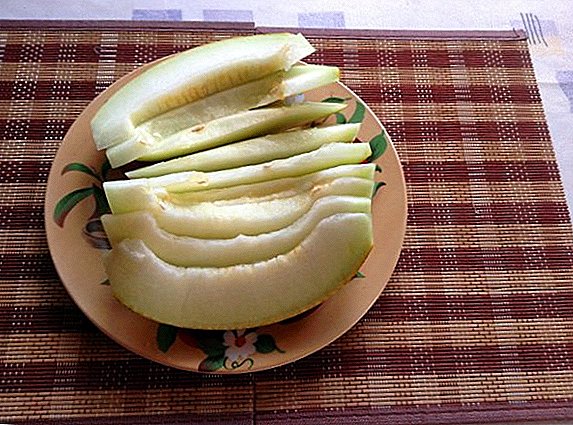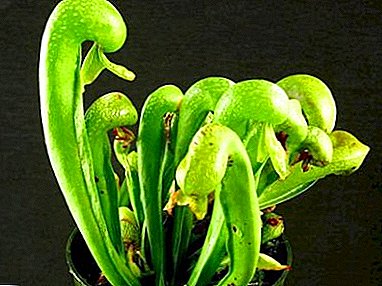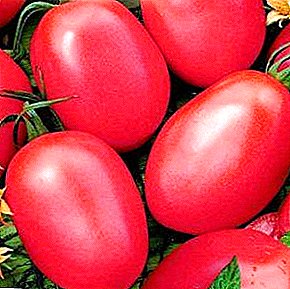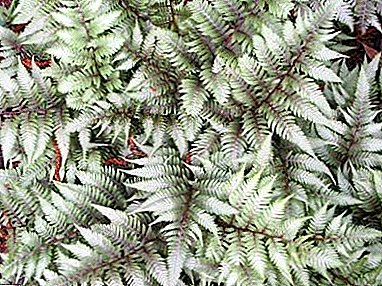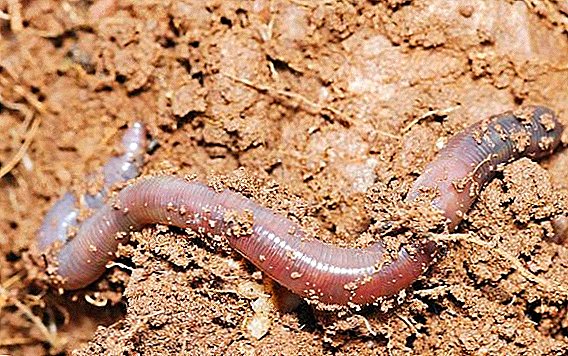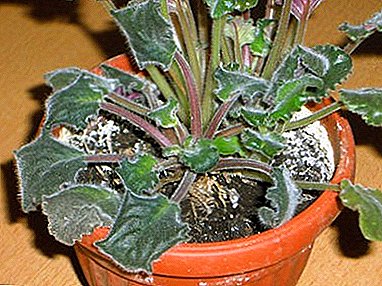
Violet is one of the most common indoor plants. And one of the most vulnerable.
It is prone to almost all known diseases, and there’s nothing to say about pests! From the owner of this delicate flower requires vigilant attention.
Today we will tell how to treat this delicate indoor flower. You can also watch a video on the topic.
Care errors
A person, unwittingly, may cause his green friend serious and sometimes irreparable harm. With what? Improper care!
The native places of violets are East Africa with its warm, humid climate.. It is necessary to try and create similar conditions for her at home: a room with a comfortable temperature of 18 to 27 degrees, no drafts, soft, diffused light.
You can read about the proper care of violet in this article.
Diseases and treatments
Why do not grow and what to do?
 There may be many reasons why the violet refuses to grow. This is a pot that is too cramped, a soil that does not allow air, and a lack of light. The florist may try to correct his mistakes by transplanting his pet into a large container, changing the soil and purchasing an artificial light lamp.
There may be many reasons why the violet refuses to grow. This is a pot that is too cramped, a soil that does not allow air, and a lack of light. The florist may try to correct his mistakes by transplanting his pet into a large container, changing the soil and purchasing an artificial light lamp.
Violets have such a fragile root system, that the most seemingly insignificant reason can negate all the many months of work of a grower. Therefore, transplantation should be done only by the method of transshipment, in order not to damage the roots, to moderately moist slightly acidic soil with a pH of 6-6.5. The soil is monitored for several days: if there are signs that it is soured or salted, the violet should be replanted again.
Why leaves turn yellow and how to treat?
 If the leaves of your pet began to turn yellow, there may be two reasons:
If the leaves of your pet began to turn yellow, there may be two reasons:
- Too cold water.
- Sunburn.
Violets should be watered in the evening when the risk of getting burned is zero.and use only warm water. For cultivation (especially in the spring-summer months), an east and west window is suitable with the ability to use shading.
Watch the video about the causes of yellowing of leaves in violets:
Infectious diseases
Fusarium
This is an infectious, extremely dangerous disease. Root, then stem and leaf rotting occurs first.
 They become watery and gradually die off. Pathogens penetrate into the roots of the soil, affect the blood vessels of the stem, petioles and roots.
They become watery and gradually die off. Pathogens penetrate into the roots of the soil, affect the blood vessels of the stem, petioles and roots.
The reasons:
- too low temperature in the room;
- lack of fertilizer;
- weakening after flowering process.
There is no cure. The affected plant is destroyed along with the soil, and the pot is disinfected with substances containing chlorine.
Watch a video about violet fusarium and its treatment:
Mealy dew
 Most often this becomes a problem only for transplanted plants.. It is all about the soil infected with fungus, the spores of which are rapidly activated at high humidity and low temperature.
Most often this becomes a problem only for transplanted plants.. It is all about the soil infected with fungus, the spores of which are rapidly activated at high humidity and low temperature.
As soon as white leaves appear on the leaves, similar to flour, it is necessary to start treating the plant with potivogribkovnymi drugs:
- "Topaz".
- "Saprol".
- "Byletton".
Board: You can use the usual sulfur, which is densely powdered violet.
Watch a video about powdery mildew on violet and its treatment:
Late blight
 Late blight affects the leaves, which are covered with brown, drying out spots, and then fall downbaring the trunk. As the disease progresses, the stem of the violets undergoes necrosis and the plant dies in a matter of weeks.
Late blight affects the leaves, which are covered with brown, drying out spots, and then fall downbaring the trunk. As the disease progresses, the stem of the violets undergoes necrosis and the plant dies in a matter of weeks.
The flower can be saved only in the case of the integrity of the outlet: the owner can root its top, having treated with antifungal medication. Healthy plant tissue has a green color, the sick - brown. The rest of the plant is destroyed.
To prevent an epidemic among domestic plants, all of them should be treated with anti-fungus preparations for prevention.
Gray rot
 The spores of the botrytis fungus causing gray rot can long remain viable in any soil.. Conditions for the development of fungi - excessive watering with excessive humidity and low room temperature.
The spores of the botrytis fungus causing gray rot can long remain viable in any soil.. Conditions for the development of fungi - excessive watering with excessive humidity and low room temperature.
Symptoms of this disease:
- wilting of leaf plates and petioles;
- fluffy smoky-gray or brown shade on the leaves and petals;
- decay of roots and stem.
The affected parts must be removed immediately and the flower treated with a fungicide.
Vascular bacteriosis
 If the air in the room is too hot and the ventilation is weak, violet bacteriosis often appears in violets.. Their leaves are covered with mucus and die off. For the treatment of used drugs:
If the air in the room is too hot and the ventilation is weak, violet bacteriosis often appears in violets.. Their leaves are covered with mucus and die off. For the treatment of used drugs:
- "Zircon".
- "Previkur".
- "Fundazol".
- "Immunocytofit".
Rust
 Often confused with a calcite burn: in both cases, the lower part of the leaf is covered with brown speckles, and the upper part is covered with orange tubercles. But rust most often affects young plants, and the disease is caused by fungi. Having cracked, the hillocks release their spores, which cover the living parts of the plant and destroy it. This ailment does not often affect violets.
Often confused with a calcite burn: in both cases, the lower part of the leaf is covered with brown speckles, and the upper part is covered with orange tubercles. But rust most often affects young plants, and the disease is caused by fungi. Having cracked, the hillocks release their spores, which cover the living parts of the plant and destroy it. This ailment does not often affect violets.
The treatment consists in spraying the plant with sulfur dust, a one-percent solution of Bordeaux mixture or a fungicide.
Pests: a brief description of the appearance and ways of dealing with them
Pliers
 As many as three species of ticks can live on a violet.. Red spiderwebs infect the outer leaves of violet, leaving red spots surrounded by spiderwebs on them. After the spider webs are brown, and the cyclamenes love young plants and their yellow marks. The infected plant stops growing and blooms, its leaves in the center of the rosettes curl and shrink.
As many as three species of ticks can live on a violet.. Red spiderwebs infect the outer leaves of violet, leaving red spots surrounded by spiderwebs on them. After the spider webs are brown, and the cyclamenes love young plants and their yellow marks. The infected plant stops growing and blooms, its leaves in the center of the rosettes curl and shrink.
For the destruction of ticks acquire:
- "Actellic".
- "Akarin".
- "Fitoverm".
Watch the video about tick-violet processing:
Shield and false shield
 This is no less insidious enemies of violets. These strollers can bring the wind into the open window, or florist on a new plant. Individuals stick to the plant, sucking the cell sap. As a result, the leaves turn yellow or turn brown completely, then curl and fall off the plant.
This is no less insidious enemies of violets. These strollers can bring the wind into the open window, or florist on a new plant. Individuals stick to the plant, sucking the cell sap. As a result, the leaves turn yellow or turn brown completely, then curl and fall off the plant.
Pests can be removed manually using a soft toothbrush. It is moistened in a solution of any dish detergent (or soap), beat the foam, cover the plant with it for 25-30 minutes, then rinse with hot water for 2-3 minutes.
The shells of individuals prevent the effects of contact insecticides, but you can use hormonal ("Admiral") or organophosphate compounds ("Spark", "Antiklesch", "Alatar").
Thrips
 Like shityovki, they feed on plant sap, but multiply much faster.. Their nests are visible on the back of the leaves, in the activity stage they cover the whole plant.
Like shityovki, they feed on plant sap, but multiply much faster.. Their nests are visible on the back of the leaves, in the activity stage they cover the whole plant.
Symptoms of appearance:
- pollen drops abundantly from flowers;
- buds die without opening;
- leaves are covered with yellow or whitish spots, small black dots, their edges dry and curl;
- the plant is covered with a sticky transparent bloom.
These nimble bugs quickly get used to many chemicals, and the larvae may not react to them at all.. Therefore, for the treatment of selected strong drugs:
- "Aktara".
- "Tanrek".
- "Inta-Vir".
- "Vertimek".
After spraying, the pot is covered with a plastic bag and left for a day. Before violet you need to wash under running warm water. After removing the pests, it is better to transplant the violet into another pot with a fresh substrate.
Watch a video about thrips on violets and the fight against them:
Tails
 Very active insects, which can be seen on the windowsill, and near the drainage hole, and on the surface of the soil. In small quantities, they are safe, but, having multiplied, they eat away all the soil organic matter, then proceed to the shoots and roots of the plant.
Very active insects, which can be seen on the windowsill, and near the drainage hole, and on the surface of the soil. In small quantities, they are safe, but, having multiplied, they eat away all the soil organic matter, then proceed to the shoots and roots of the plant.
The appearance of springtails is a kind of indicator: this means that irrigation rates were systematically exceeded.. In the leaves, flowers and stems, small holes appear, the violet stops growing, its root system rots.
Drying the earth coma will destroy some of the pests, but to get rid of more, you need to water the soil with Agravertin, Pyrethrum, or any other insecticide. Of folk remedies, powdering with tobacco dust or ash helps well.
As a preventive measure, you can add Askofen or Citramon to water for irrigation. (half a pill for 2-3 liters of water).
Watch a video about springtails in violet and the fight against them:
Nematodes
 Infection occurs with planting material or through the affected leaf.. The growth of violet slows down, the tops are molded to one another, the numerous stepchildren practically do not grow in the leaf axils. On the roots appear thickening and warty growths.
Infection occurs with planting material or through the affected leaf.. The growth of violet slows down, the tops are molded to one another, the numerous stepchildren practically do not grow in the leaf axils. On the roots appear thickening and warty growths.
To cure a plant affected by this filth, it is impossible.
Larvae, covered with a strong protective sheath, are capable of storage for many years in the most adverse conditions. No poison can penetrate strong defense..
Watch the video about nematodes in violets:
Redhead
 Worm bites deform violet leaves, leaving red and brown spots on them. These "shaggy lice" prefer to settle on peduncles, in the sinuses and folds of leaves. Females are covered with white fluff and damage the root system, dwelling most of the life in the soil.
Worm bites deform violet leaves, leaving red and brown spots on them. These "shaggy lice" prefer to settle on peduncles, in the sinuses and folds of leaves. Females are covered with white fluff and damage the root system, dwelling most of the life in the soil.
Signs of pests:
- rosettes and roots rot;
- appeared buds wither, new ones do not appear;
- the trunk and bosoms of the leaves are covered with white bloom;
- leaves turn gray, young shallow, old ones soften to a jelly state.
The florist should remove the affected leaves and wash the plant in a strong soap solution.. The next stage is insecticide treatment:
- "Aktaru".
- "Confidor".
- "Basudin".
Watch the video about the redhead on violets and the fight against them:
Aphid
Determined by sticky secretions on the leaves and insects on the back side and petioles. They are washed off with a strong soap or tobacco solution, without over-moistening the soil, and then sprayed with "Fitoverm" or "Antitlin".
Mokritsy
 Ideal conditions for their appearance - loose substrate and high humidity.
Ideal conditions for their appearance - loose substrate and high humidity.
Larvae or adults can be stored in the ground, taken from greenhouses, from damp rooms. They destroy the root system, leaves and flowers.
The greatest effect is given by acaricides, which need to be sprayed with a plant and watered the substrate.
Mosquitoes and midges
 Systematic overmoistening of the soil, overheating of the substrate causes the appearance of midges and mosquitoes. Adults do not cause harm, unlike the larvae that destroy the substrate, disrupting the circulation of air there and water absorption. Roots and stems rot.
Systematic overmoistening of the soil, overheating of the substrate causes the appearance of midges and mosquitoes. Adults do not cause harm, unlike the larvae that destroy the substrate, disrupting the circulation of air there and water absorption. Roots and stems rot.
Treatment methods:
- the soil is watered with carbofas solution;
- grated on a grater small cockroaches "Masha" sprinkle liberally on the ground in a pot;
- Dichlox gel is applied to the pot;
- hanging flypapers from flys, dichlorvos, Reid aerosol;
- dried earthen clod in containers;
- Replace contaminated soil with fresh.
Whitefly greenhouse
 Adults bright white flies settle on the back of the leaves, in the same place, the pad is left - feces in the form of a brilliant bloom. Over time, black or sooty mushrooms appear on this raid, due to which the upper part of the leaves is painted first in white and then black. It is because of these fungi that violets stop growing..
Adults bright white flies settle on the back of the leaves, in the same place, the pad is left - feces in the form of a brilliant bloom. Over time, black or sooty mushrooms appear on this raid, due to which the upper part of the leaves is painted first in white and then black. It is because of these fungi that violets stop growing..
The best treatment regimen includes the use of drugs of the acarin group ("Actofit", "Fitoverm") with systemic insecticides in the mixture.
Important: In the event of a disease or lesion of violet, it must be isolated from others.. Otherwise, it infects all nearby plants.
Conclusion
Prevention and care - this is probably all that any home flower needs.. Whether unpretentious cactus or fragile violet. Even an inexperienced florist can handle the care of the senpolia.


